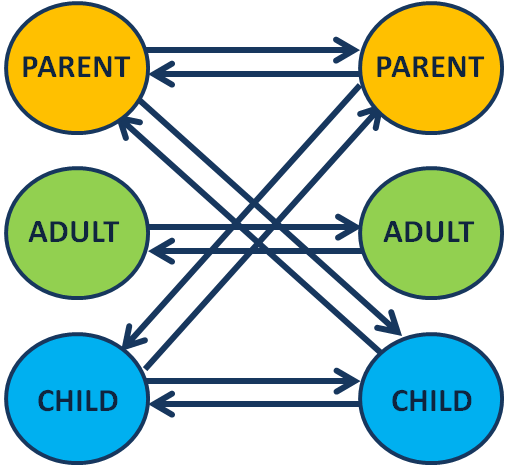Here’s another five step sequence to think about the underlying dynamics in the relationship from both persons’ perspectives.
This is informed by Berne’s Transactional Analysis (TA) parent-adult-child model.
1 Breathe.
2 Parent.
Is one or other person taking a dominant or dictatorial role in the conversation?
Are they being directive?
Is this appropriate?
(Clue: in most adult relationships adults are expected to act like grown-ups and to treat one another in the same way.)
This is universal.
(For lawyers this includes exchanges between judges and advocates, heads of chambers, clerks and pupils, senior partners and trainees, even associates and the office cleaner.)
3 Adult.
Are we both behaving and treating each other as grown-ups?
4 Child.
Is one person in the relationship taking a submissive role?
It is entirely appropriate for people to take orders from those in authority; it’s quite another for them to be victimised, humiliated, or bullied.
5 Breathe.
(If you someone is behaving in an inappropriately ‘parental’ or ‘childish’ way, gently and assertively redress the balance by trying as best you can to behave like a grown up talking to a grown up.
This can take time.
You may find them infuriating for a while.
And maybe check out the GIVE model.
Practice makes perfect.)

(Next)
(This is an edited excerpt from my book A Lawyer’s Guide to Wellbeing and Managing Stress published by ARK Group in 2015.)


